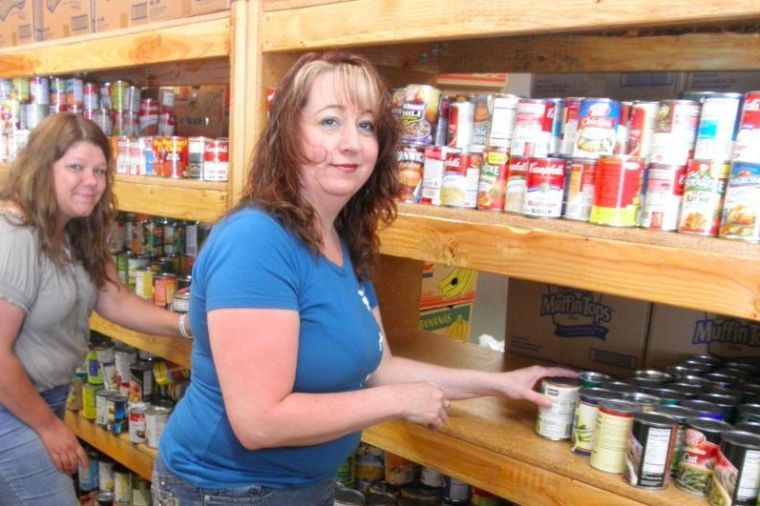Some information may be outdated.
Though Utah’s economy has been showing overall improvement and steady job growth, ‘Kids Count,’ a new report by the Annie E. Casey Foundation has found that child poverty in the state is growing.
In Grand County the rate of child poverty, though significantly higher than the state average, has stayed relatively consistent over recent years, according to the study.
Kids Count is a national and state-by-state annual report that quantifies 25 indicators of child well-being.
“We recognize that having good data on what’s going on with kids is really the first step in how we solve the problem,” said Terry Haven, the director of Voices for Utah Children, the Salt Lake City-based group in charge of coordinating the Utah section of the Kids Count report.
“We have been doing it for 18 years. Some things have improved, some things are getting worse,” she said.
The primary mission of the Annie E. Casey Foundation is to foster public policies, human-service reforms and community support to meet the needs of vulnerable children and families.
“The most troubling thing we look at is children in poverty,” Haven said. “It’s troubling because we know that living in poverty, and the consequences of living in poverty, have a negative effect on just about everything else we look at.”
In 2000 Utah’s under-18 poverty rate was 8.9 percent, in 2005 it reached 12 percent, and in 2011 that number reached 16 percent, according to the Kids Count report.
The current federal poverty level for a family of four is an annual household income of $23,350.
The number children in Utah has increased since 2005 by nearly 15 percent. Currently a third of the state’s population is children.
The number of children living in single parent households also grew from 18 percent in 2005 to 21 percent in 2011. Utah now also ranks No. 37 in the nation for children that have health insurance. Eleven percent of children in Utah have no health insurance, two thirds of whom come from low-income families.
“There’s a whole host of negative outcomes that are associated with poverty. So when we see poverty rise continually over the years it’s really a huge concern for us,” Haven said. “Because we wonder what’s going to happen down the road to all the other indicators that we know are affected by that one variable.”
Children from low income families are less likely to have access to good schools and more likely to develop medical, behavioral and emotional problems as they grow up, according to the Kids Count report.
“Children raised in poor families are more likely to suffer mental delays. Children in low-income families tend to be sick more often,” said Sherilyn Sowell, the director of Moab’s Family Support Center.
The Family Support Center offers emergency day care and temporary child care for parents who cannot afford day care.
“Every day we see children that live in poverty,” Sowell said.
With an under-18 poverty rate of 21.3 percent in 2000, 22 percent in 2007, and 24.3 percent in 2011, Grand County’s child poverty rate has stayed far higher and, though rising, is far more uniform that the state average.
According to the study, poverty in Grand County falls disproportionately on children; Grand County’s total poverty rate is only 15.5 percent in comparison.
A seasonal economy and a lack of adequate transportation are two factors facing families that have contributed to child poverty in Grand County, said Valerie Patrick, a family educator at Moab’s Headstart Program, a government assistance program for low-income families.
“There is a lower pay scale in Moab versus other places,” she said. “One of the biggest challenges for families that I have seen is transportation. Families that don’t have good credit aren’t able to get reliable transportation that won’t break down.”
The number of families that use the Grand County Food Bank also demonstrates the seasonality of Moab employment, said Colette Freestone, a community services program manager for the Southeastern Utah Association of Local Governments, the organization that operates the Grand County Food Bank.
“Our numbers increase every winter and decrease every summer,” she said.
Reports like Kids Count help organizations like the Grand County Food Bank keep a broad perspective in the work they do, Freestone said.
“It gives us a big picture. Sometimes we are so concentrated on who we serve and the areas we serve that we sometimes don’t look at the big picture,” she said.
According to Kids Count there some areas in which Utah is improving. The rate of teen pregnancy has dropped significantly as has the school dropout rate.
Data from Kids Count has also helped Utah Sen. Stuart Reid, R-Ogden, to head a bill this year which mandates that a commission be formed by the various government agencies dealing with poverty. The commission is to study the Kids Count numbers and figure out solutions to the problems that the reports identify, said Haven, of Voices for Utah Children.
“We know there are things that work,” she said. “Positive experience in preschool is huge. Earned income tax credit is huge for families. Policies like CHIP and Medicaid are huge in breaking the cycle of poverty.”
Government policies and other programs that enable children to pursue an education are probably the single greatest contributor to breaking the cycle of poverty, Patrick said.
“Being a single mom myself, the higher that I was able to get my education, the higher pay scale you are able to get,” she said. “Education is huge. And there are so many programs and grants available for that. It is open to pretty much anybody.”
Appreciate the coverage? Help keep local news alive.
Chip in to support the Moab Sun News.





